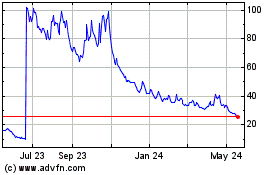January was a month to forget for equity investors, as broad
markets took a step back to start the year. Concerns over job
growth, emerging markets, and the continuation of the taper weighed
heavily on stocks in the month, and led some to believe that
the bull run is finally nearing an end.
This sluggishness was further confirmed by the performance of
volatility-linked (usually VIX-linked) investments as these have
done pretty well over the past two weeks. This is a bit of a
surprise as volatility Exchange Traded Products usually see
terrible performances, though in rare times like the past 10 days
they can really prove their worth for short-term oriented
traders.
Volatility and the VIX in Focus
The VIX is often referred to as the ‘fear index’ and is thought of
as a gauge of investor perception of the market’s risk. It is
constructed using implied volatilities of S&P 500 index
options, taking both calls and puts into account.
Generally speaking, this benchmark increases when fear levels are
rising, and it slumps when markets are doing well and there is
little prospect of risk events on the horizon (read Why I Hate
Volatility ETFs).
While investors can’t directly buy up this index, there is a
popular ETN option at our disposal that can give us some exposure
to volatility, the
iPath S&P 500 VIX Short-Term Futures
ETN (VXX). This product has nearly $1 billion in assets
under management and it sees an average daily volume of over 18
million shares so trading in and out of VXX shouldn’t be too much
of a problem.
The product has been a pretty poor performer over the past year
though, as the solid market has curtailed the need for
volatility-linked investments. Additionally, due to the nature of
volatility, the underlying index’s futures contracts—which are the
basis of this ETN—are generally in contango and thus it can be an
uphill battle for long term investors in this type of product (see
all the Volatility ETFs here).
Still, during short time periods, products like VXX can prove to be
winners, and that has certainly been the case during this recent
sell-off.
Selling Pressure Leads to VXX Gains
Over the past ten trading sessions, SPY has declined by about 3.4%
in a steady downward move. Emerging market worries and the Fed’s
escalation of the taper really hit the market hard, and have left
many feeling bearish (and fearful) about the market’s near term
outlook.
Thanks to this, VXX has been doing quite well on extreme amounts of
volume. The product has actually added more than 21% in the past
ten days, including a nearly 10% burst higher in Friday trading on
volume that was over 69 million shares (see Volatility ETFs: Three
Factors Investors Must Know).
And for the truly bold traders out there, two leveraged volatility
products exist; the
VelocityShares Daily 2x VIX Short Term
ETN (TVIX) and the
ProShares Ultra VIX Short-Term
Futures ETF (UVXY). These both added more than 16% in
Friday trading, capping off a 10 day run of more than 40% each.

So clearly, it has been a very good time to be in the volatility
market, though the ‘volatility of volatility’ is pretty high. The
leveraged volatility products saw more than half of the gains
disappear in one session, while Friday trading saw these losses
erased as the S&P 500 tumbled again. Positions in this corner
of the market need to be monitored closely, as after such a run in
volatility we are probably due for a pullback soon.
Bottom Line
When markets are sliding and investors are starting to become
fearful, there are few investments that are better than volatility.
As we have seen with the trio of VXX, TVIX, and UVXY, huge gains
are possible in a very short time frame, and they can help to
balance out weakness in other parts of a long-focused
portfolio.
However, gains can evaporate as quickly as they come in the
volatility market, so make sure to be nimble. The futures curve
generally works against investors here, and long-term charts aren’t
pretty for products like VXX, so make sure to only use these for
short-term purposes.
If you are looking to apply a volatility-hedged strategy as part of
a broader equity play, consider either the
PowerShares
S&P 500 Downside Hedged Portfolio (PHDG) or the
Barclays ETN+ S&P VEQTOR ETN (VQT). Both of
these follow a dynamic index which includes both equity and
volatility components, shifting towards volatility as volatility
levels rise (see Two Hedged ETFs Built for Rocky Markets).
This technique costs a lot more than a simple investment in the
S&P 500, and it can often underperform broad markets. However,
during times when volatility is rising, this approach can earn its
keep in a big way, suggesting that some who are fearful—but aren’t
willing to tolerate the big moves in VXX and the like—might want to
look to these products instead for a ‘safer’ way to play volatility
in today’s uncertain market.
Want the latest recommendations from Zacks Investment Research?
Today, you can download
7 Best Stocks for the Next 30
Days.
Click to get this free report
>>
PWRSH-SP5 DHP (PHDG): ETF Research Reports
SPDR-SP 500 TR (SPY): ETF Research Reports
VEL-2X VIX ST (TVIX): ETF Research Reports
PRO-ULT VIX STF (UVXY): ETF Research Reports
BARCLY-SP VEQTR (VQT): ETF Research Reports
IPATH-SP5 VX ST (VXX): ETF Research Reports
To read this article on Zacks.com click here.
Zacks Investment Research
Want the latest recommendations from Zacks Investment Research?
Today, you can download 7 Best Stocks for the Next 30 Days. Click
to get this free report
ProShares Ultra VIX Shor... (AMEX:UVXY)
Historical Stock Chart
From Feb 2025 to Mar 2025

ProShares Ultra VIX Shor... (AMEX:UVXY)
Historical Stock Chart
From Mar 2024 to Mar 2025
